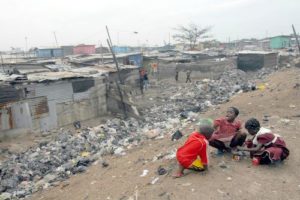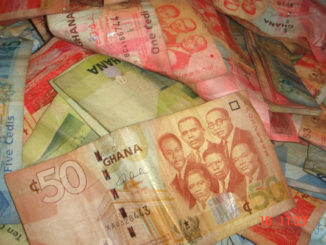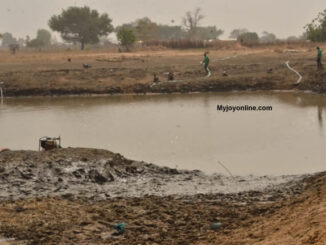Conversations at social gatherings almost always end with the concern that Ghana has become sharply divided, intolerant and polarised, especially around the two dominant parties and individuals who lead them.
We are a very unequal nation and becoming more and more so. Vertical inequality refers to when you rank households by their wealth (or income) from the poorest to the richest.
This is mainly how statisticians measure income inequality.
Horizontal inequality, on the one hand, refers to the comparison among social groups: men vs women; wage earners vs those whose incomes come from profits or/and rents; urban vs rural or between geographic/administrative regions or districts.
The bad news is that we are getting more divided at all these levels.
The danger is that the combination of a material divide and a toxic political environment leads ultimately to distractive outcomes.
Living standards
In August this year, the Ghana Statistical Service (GSS) released the results of the seventh round of the Ghana Living Standards Household Surveys (GLSS 7), which measure how well we are doing in relation to poverty, access to public services and inclusive development.
This report makes for a grim reading.
Since 2005/06, poverty reduction has slowed significantly with the periods 2012/13 and 2016/17 being the worst when poverty reduced marginally from 24.2 per cent to 23.4 per cent.
At a glance, a poverty rate of 23.4 per cent looks good, compared to our neighbours. However, as is always the case, national averages don’t tell the full story, and as someone put it: “It is a bit like that proverbial person whose temperature, on average, was fine, except that their head was on fire and their feet freezing.”
Poverty, in fact increased in the Volta Region from 33.8 to 37.3 per cent, the Northern Region from 50.4 to 55.7 per cent, the Upper East Region from 44.4 to 54.8 per cent, and in the Upper West Region from 70.7 to 70.9 per cent.
Poverty reduced everywhere else but only marginally in the Brong Ahafo and Western regions.
However, in the Savannah parts of Ghana, poverty, including extreme poverty, increased. Poverty in Ghana is, therefore, largely a rural Savannah problem.
Indeed, the rural Savannah contributes 75.4 per cent to Ghana’s poverty incidence and 84.3 per cent of extreme poverty in Ghana.
The report has two other important messages: economic growth has become less pro-poor and national income inequalities have been increasing steadily since 2005/06 and is now approaching the most unequal countries on the African continent with a Gini index of 43 per cent.
Further evidence
The second report, released by OXFAM, SEND Foundation and Ghana Anti-Corruption Coalition (CSOs), came to similar conclusions but conveyed the problem in more imaginative ways: “One of the richest men in Ghana earns from his wealth more in a month than one of the poorest women could earn in 1,000 years; the wealthiest 10 per cent of Ghanaians consume more than the bottom 60 per cent of the population combined; nearly a third of the poorest children in the Northern Region have never been to school, compared with just five per cent of the wealthiest families; only an estimated six per cent of the richest people in Ghana are women; 1,000 more US$ millionaires were created between 2006 and 2016.”
The UNDP also recently published the second regional Human Development Report (HDR), this time focusing on Northern Ghana, following that of the Western Region.
The Human Development Index (HDI) which measures several human conditions – life expectancy, health, income and years of schooling – found that the HDI for Northern Ghana was 0.116 compared to a national index of 0.576. The closer to one, the higher the quality of human development, meaning that the quality of life of the average northern Ghanaian is not only low, it is one-twentieth of that of the average Ghanaian.
How inequality hurts
A lot has been written about why growing inequalities are damaging to society. According to the IMF, when inequality in society exceeds a Gini of 27, it harms long-term economic growth and prosperity.
Ghana’s most recent Gini is 43. The United Nations, the World Bank and others say when inequalities are high, economic growth is not efficient in reducing poverty.
The main conclusion of the 2006 World Bank report is that equity is a good thing, “it is complementary to the pursuit of long-term prosperity and there is no necessary dichotomy between policies for growth and policies aimed at equity”.
The CSOs report claims that 300,000 more Ghanaians could have been lifted out of poverty between 2006 and 2013 had inequality not increased.
Those who work in the peace and conflict sector also say high levels of inequality increase the risk of violent conflicts, especially when the inequality is horizontal, i.e. when specific groups feel done for.
Why does inequality have these negative effects? A key one is that inequalities tend to be interlocking and re-enforcing. Those who are economically wealthy also tend to be the most politically and culturally influential and dominate institutions of society.
This multiple domination creates ‘inequality traps’ where social differences are reinforced by the overt and covert use of power by the dominant groups to entrench their domination.
The solutions
To break this cycle, the focus should be on creating equality of opportunities in multiple sectors – the socio-economic, the political and the cultural.
It is opportunities that fuel aspiration and aspiration drives creativity and social migration upwards.
The CSOs report proposes a five-point agenda: manage public finances efficiently and review the resource allocation formula underpinning the budget; improve equitable access to good quality pubic services for the poor and girls in particular; pay living wages; pursue gender equality, including increasing women’s control of economic assets; and break the political capture and corruption that plague our society.
The UNDP Northern Ghana HDR recommends that given the poverty and inequality traps that Northern Ghana finds itself in, a socio-economic transformation approach is necessary to unlock the traps.
This involves an integrated response at scale involving strategic investment in economic and social infrastructure combined with social protection for the poorest and environmental regeneration.
To finance this may require a review of the public finance allocation formulas and better coordination of development assistance.
The Northern Savannah Ecological Zone Masterplan developed by SADA, now the Northern Development Authority (NDA), has detailed some of these catalytic projects, which, if implemented, could grow the area annually by 12 per cent and by 2040, will increase its contribution to Ghana’s GDP from the current 14 per cent to 24 per cent, representing prosperity for all Ghanaians.
A national dialogue is required to build the necessary consensus for action. Reducing inequalities is the 10th goal of the SDGs.
Fortunately, our President, Nana Addo Dankwa Akufo-Addo, is a co-Chair of the United Nations Eminent Group on the SDGs.
–
By:
Charles Abugre, Email: caabugre@gmail.com
The writer is former CEO of SADA, a former Commissioner of NDPC and Convener of Foundation for the Transformation of Marginal Areas (TAMA Foundation Universal).
This piece first featured on graphiconline.com.gh




